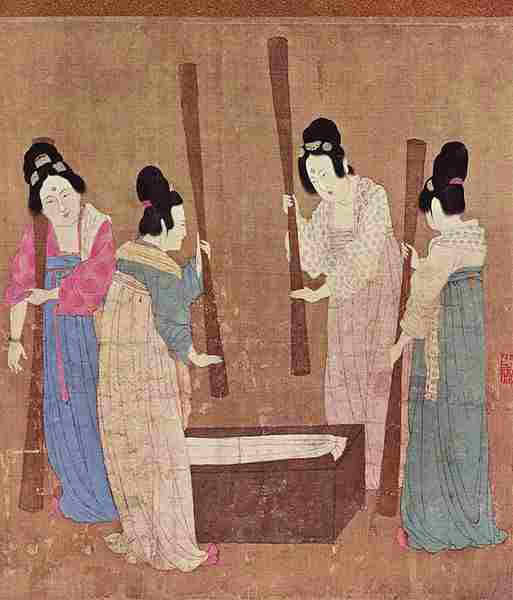| Who developed the silk production? It was our ancestors who first developed the silk fabric. According to the Chinese legend, Lei Zu(嫘祖), wife of the Yellow Emperor, discovered silk and invented the silk loom in the 27th century BC. She taught people how to raise silkworms and how to extract the silk.
When silk was first discovered, it was exclusively reserved to be used by the ruler and the highest dignitaries. At the beginning of The Warring States Period in China, the use of silk was no longer limited to the upper classes of society and grew in popularity. Different classes gradually began to wear it. When silk came into more general use, it was also quickly put to industrial use by the Chinese.
| 
|
Silk, indeed, rapidly became one of the principal elements of the Chinese economy.
During the Han Dynasty, the silk production developed rapidly. Many manufactured goods were transported from the then capital city Chang’an (today’s Xi’an) to other countries. This overland trade route was called "Silk Road". At the same time, there was also a “Marine Silk Road”. And so, the silk connected China to the rest of the world.
However, the Marine Silk Road became much more important than the Land Silk Road in the Song Dynasty and fully developed in the Yuan Dynasty, because the ruler extended the trade to Southeast Asia in particular. Besides Chinese exports, foreign businessmen also came to China to buy silk and china wares.
In both Ming and Qing Dynasties silk was transported to Europe and America. From then on China dominated the world's silk market. |